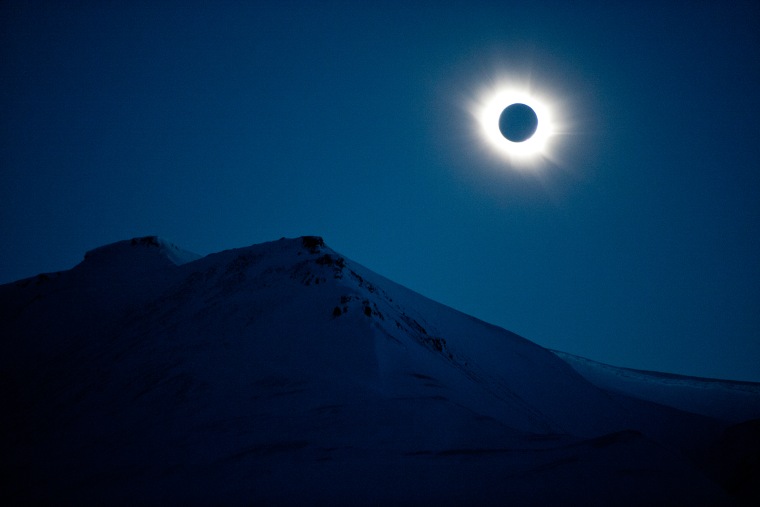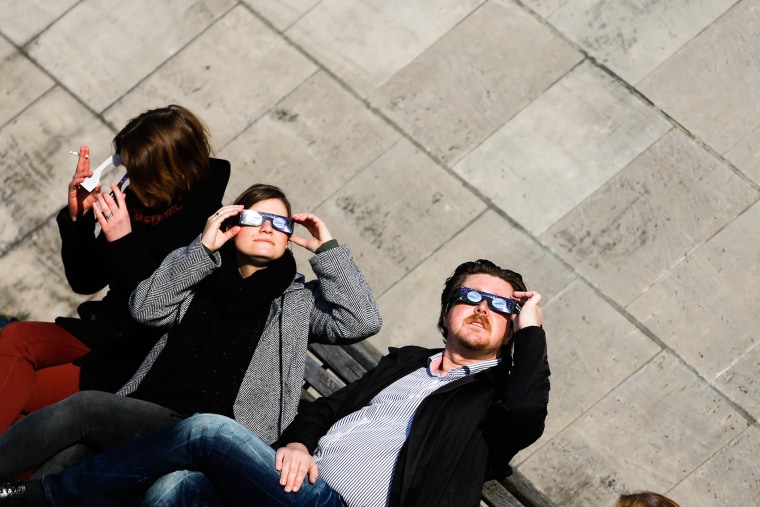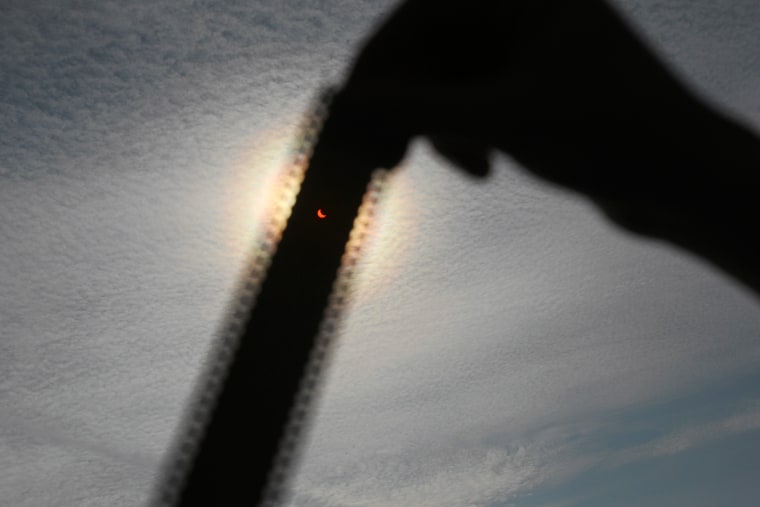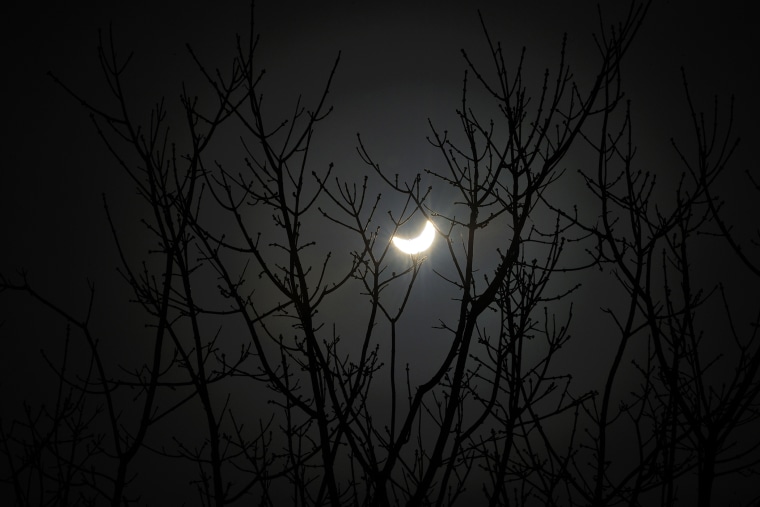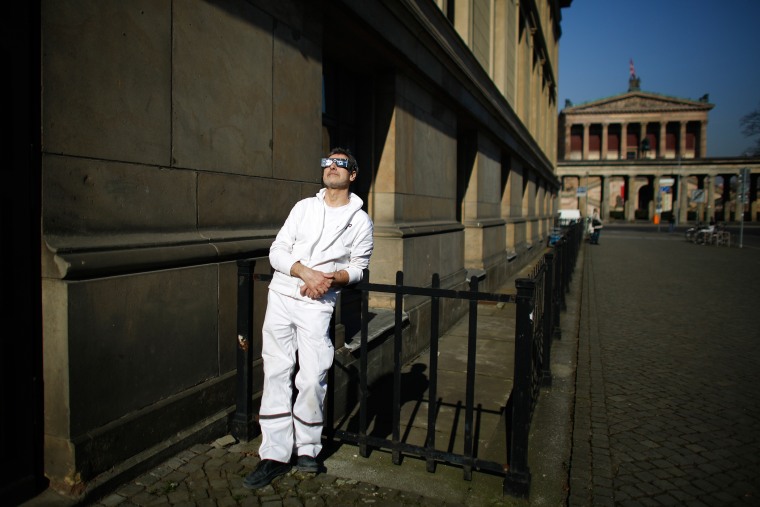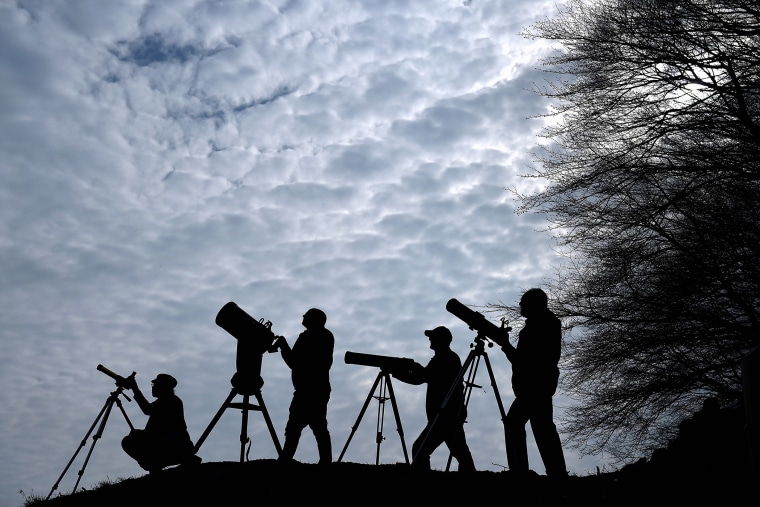Millions of people were mesmerized by a rare sight Friday morning: a partial solar eclipse, as the moon passed between the Earth and the sun, casting an eerie shadow over Europe, northern Africa and northern Asia.
Meanwhile, for those lucky few living on the Faroe Islands, northwest of Scotland, and the Svalbard Islands, east of Greenland, the sky was darkened by an even rarer event: a total solar eclipse, in which the moon fully blocks the light of the sun, plunging day into night for a few mind-blowing minutes.
[More: Solar eclipse 2015 as seen around the world]
While a total solar eclipse is visible somewhere on Earth approximately once every 18 months, the chance of actually seeing one is vanishingly rare. Most places on the planet only experience the cosmological event once every several hundred years.
Luckily, North American skywatchers won’t have to wait long. A spectacular total solar eclipse is set to cross the length of the contiguous United States on August 21, 2017 -- first darkening the skies over Oregon, then traveling slowly southeast toward South Carolina.
